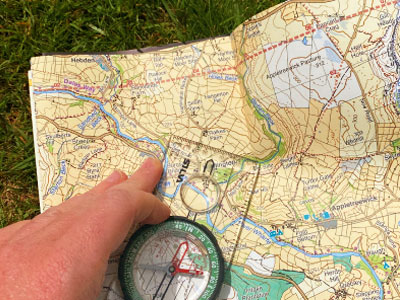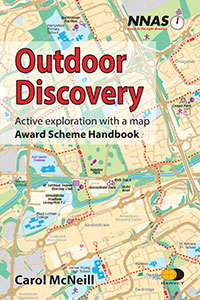Navigation decision making - the OODA loop
by Nigel Williams

Observation is key to helping us make decisions. A lack of observation (frequently due to good chat and other distractions) is often the root cause of people becoming disorientated. Observation is a habit that needs to be developed in conjunction with understanding and interpreting the map. For the novice the 1:50,000 scale often fails to offer enough information to maintain interest. If walking in a forest for instance, there is very little to observe on a 1:50k scale by comparison to using a 1:40k or 1:25k scale, or even better an orienteering map. Ideally novices should progress through the different scales of map, each progression offers less information and requires more interpretation as confidence builds.

Having gathered observations and orientated the map we should be able to make a route choice decision. Decisions have consequences, which can be physical or mental, and can be susceptible to heuristic biases, similar to some of those we recognise in avalanche education. For example, some recent research using eye tracking technology suggests that we are easily drawn to following the path that appears to be the smoothest and easiest to walk on. Being aware of such biases is usually the best way to mitigate them.
When teaching navigation however, we rarely focus on teaching decision making. We don't seem to have a model or process to support it. There are quite a number of decision making models out there and some readers may be familiar with the OODA loop; Observation, Orientation, Decision and Action.

The 4 stages are:
1. Observation - A continuous process of ticking off features and landmarks, gathering and processing information, ground to map and vice versa.
2. Orientation - Compare our current position with our observed landmarks or behaviours. Orientate ourselves and the map with or without the compass.
3. Decision - Deciding which path, route or course of action to take.
4. Action - Set off.
Being a continuous loop is an important element of the model, as soon as we Action a Decision we are back to Observation and information gathering, helping to confirm the Action and also prepare for the next Decision.

- If you are looking for some information on the basics of navigating with a map, then take a look at Outdoor Discovery, Active Exploration with a Map - suitable for all levels of navigation, and includes several easy to follow and fun activities.
Return to the Navigation Blog
 FREE UK delivery
FREE UK delivery For Christmas delivery information
For Christmas delivery information 








